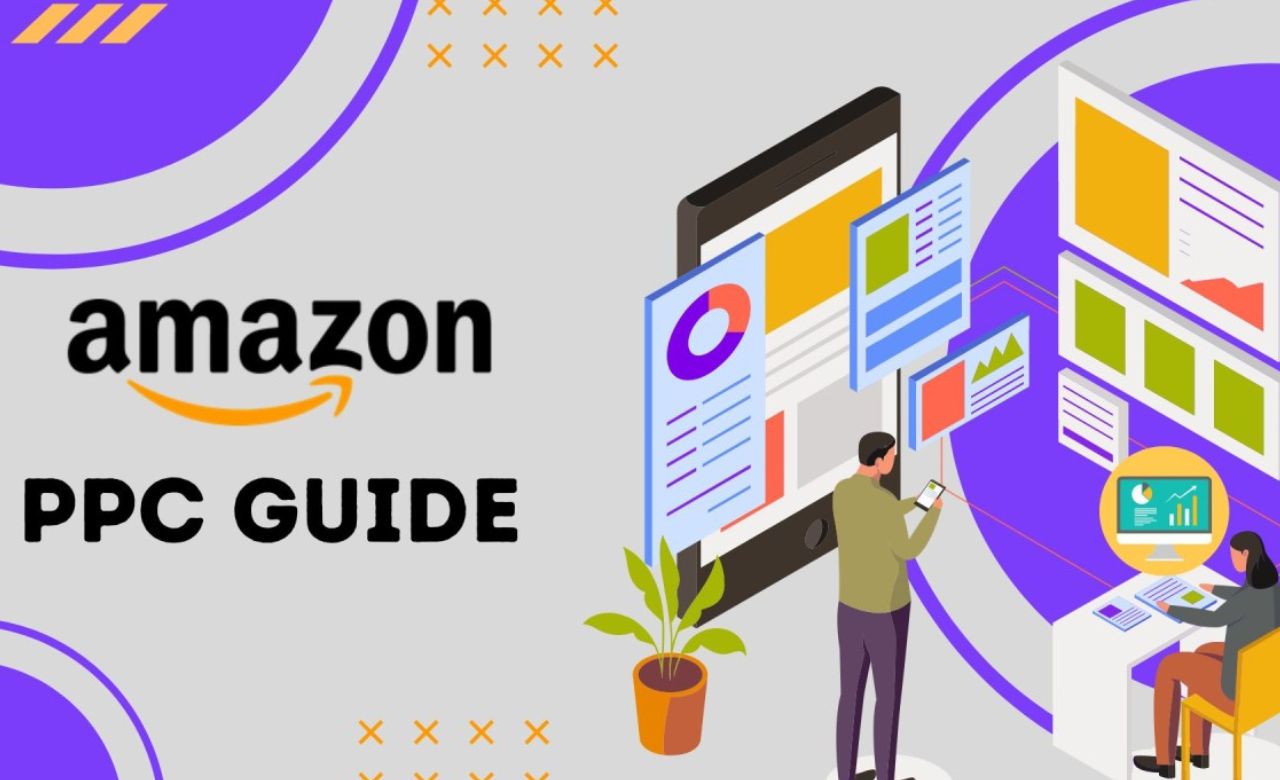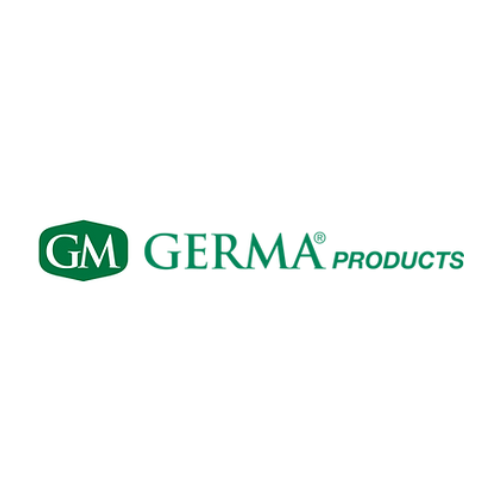
Mastering Amazon FBA PPC on a Budget: Complete Guide
In the competitive landscape of online retail, mastering
Amazon FBA PPC (Pay-Per-Click) advertising emerges as a pivotal strategy for
individual sellers aiming to enhance visibility, drive traffic, and boost sales
for their products. Amazon's PPC platform allows sellers to bid on keywords,
enabling their products to appear prominently in Amazon's search results and
product pages as sponsored listings. This advertising model is particularly
beneficial for sellers utilizing Fulfillment by Amazon (FBA), as it complements
the logistical advantages of FBA with the marketing leverage needed to stand
out in a crowded marketplace.
The significance of Amazon FBA PPC for individual sellers
cannot be overstated. In a platform where millions of products vie for
attention, PPC campaigns offer a direct path to increased visibility. By
carefully selecting keywords and crafting targeted ad campaigns, sellers can
position their products in front of highly interested buyers precisely when
they are ready to make a purchase. This targeted approach to advertising is not
only cost-effective but also results in higher conversion rates, making it an
indispensable tool for sellers looking to grow their Amazon business.
Enter UTN Wholesale, a strategic ally for individual Amazon
sellers seeking to maximize their PPC campaign outcomes. UTN Wholesale
specializes in providing access to a wide range of high-margin products across
various in-demand categories such as health and personal care, home and
kitchen, electronics, and more. Partnering with UTN Wholesale allows sellers to
source products that not only promise high returns but are also perfect
candidates for PPC campaigns due to their market demand and profitability
potential. By focusing on products with substantial profit margins, sellers can
ensure their PPC investments yield tangible results, enhancing both sales volume
and overall profitability.
UTN Wholesale's commitment to empowering Amazon sellers
extends beyond offering competitive pricing and high-quality products. It
encompasses a comprehensive support system designed to facilitate every step of
the selling process, from product selection to inventory management and beyond.
This holistic approach positions UTN Wholesale as more than just a supplier;
it's a partner invested in the success of individual Amazon sellers, providing
the tools, products, and insights needed to thrive in the dynamic world of
Amazon FBA selling.
Understand Amazon FBA PPC
In the ever-evolving digital marketplace, Amazon FBA PPC
stands out as a critical tool for sellers aiming to enhance their product
visibility and sales. This advertising model, tailored for the Amazon platform,
operates on a pay-per-click basis, enabling sellers to bid on keywords that
potential customers are likely to use when searching for products. This section
delves into the intricacies of how Amazon PPC functions, focusing on keywords,
bidding, and ad placements, while underscoring the importance of PPC campaigns
for improving visibility and driving sales on Amazon.
How Amazon PPC Works
Keywords: The foundation of any Amazon PPC campaign
is keyword selection. Sellers identify keywords relevant to their products,
which shoppers are likely to use during their search. These keywords can range
from broad to very specific long-tail keywords, each serving different intents
and stages of the buyer's journey. Effective keyword research and selection are
paramount, as they determine the visibility of PPC ads to the target audience.
Bidding: Once keywords are selected, sellers bid on
these keywords, setting a maximum amount they are willing to pay for a click on
their ad. Amazon's PPC model is primarily auction-based, meaning the visibility
of ads is influenced by both the bid amount and the ad's relevance to the
search query. Sellers can opt for automatic bidding, where Amazon sets bids to
maximize visibility, or manual bidding, which offers more control over bid
amounts on specific keywords.
Ad Placements: Amazon PPC ads can appear in various
locations, including at the top of search results, on product detail pages, and
within the Amazon Buy Box. The placement of ads is critical, as it affects
their visibility and potential click-through rates. Higher placements often
result in greater visibility and more clicks, but they also come with higher
competition and costs.
Importance of PPC for Visibility and Sales
Enhanced Product Visibility: In a marketplace as vast
as Amazon, standing out is crucial. PPC campaigns propel products to more
prominent positions in search results, increasing the likelihood of discovery
by potential buyers. This visibility is especially vital for new products or
those in highly competitive categories.
Targeted Traffic: PPC allows sellers to target their
ads to specific segments of Amazon shoppers, based on keywords, interests, and
buying behavior. This targeted approach ensures that ads are shown to consumers
with a higher intent to purchase, leading to better conversion rates.
Control Over Marketing Spend: With Amazon PPC,
sellers have significant control over their advertising budget. They can set
daily budgets, adjust bids for specific keywords, and pause or modify campaigns
based on performance. This flexibility enables sellers to optimize their
advertising spend for maximum ROI.
Quick Results: Unlike organic search strategies that
take time to yield results, PPC can provide immediate visibility and sales
boosts. This immediacy is invaluable for launching new products or capitalizing
on seasonal demand spikes.
Data-Driven Insights: Amazon provides detailed
performance metrics for PPC campaigns, offering insights into clicks,
impressions, conversion rates, and more. Sellers can use this data to refine
their campaigns, improve ad copy, adjust bids, and better understand customer
search behavior.
In conclusion, mastering Amazon FBA PPC is essential for
sellers aiming to increase their products' visibility and sales on Amazon. By
strategically selecting keywords, managing bids, and optimizing ad placements,
sellers can leverage PPC campaigns to target potential customers effectively.
As a strategic partner, UTN Wholesale plays a pivotal role in this ecosystem, providing
individual sellers with high-margin products ideal for PPC campaigns, thereby
maximizing their chances of success in the competitive Amazon marketplace.
Selecting the Right Products for PPC
In the dynamic realm of Amazon selling, leveraging Pay-Per-Click
(PPC) advertising is a strategic move to amplify product visibility and sales.
However, the success of PPC campaigns doesn't solely depend on well-crafted ads
or meticulously selected keywords; it hinges significantly on the types of
products you choose to promote. Herein lies the importance of selecting
high-margin products for PPC campaigns to ensure profitability. Partnering with
a supplier like UTN Wholesale can provide invaluable insights into trending
high-margin categories, guiding sellers toward more profitable PPC endeavors.
Importance of High-Margin Products for PPC Campaigns
High-margin products are the cornerstone of a profitable PPC
campaign. The rationale is straightforward: products with higher profit margins
can absorb the cost of PPC advertising more effectively, ensuring that the
advertising spend does not outstrip the potential profit. This is particularly
crucial for individual sellers on Amazon, who must navigate the competitive
landscape efficiently. High-margin products offer the financial leeway to bid
competitively for high-value keywords, enhancing visibility without
compromising profitability.
Insights from UTN Wholesale on Trending High-Margin
Categories
Health and Personal Care: This category has seen a
sustained rise in demand, particularly for products that cater to wellness and
self-care. Supplements, organic skincare items, and health monitors not only
meet a growing consumer need but also offer attractive margins for sellers. UTN
Wholesale identifies these as prime candidates for PPC campaigns, given their
high demand and profitability potential.
Home and Kitchen: With the shift towards spending
more time at home, products that enhance living spaces are increasingly
popular. Unique or innovative home and kitchen gadgets that stand out in the
marketplace can capture consumer interest and command higher price points,
making them ideal for PPC promotion.
Electronics and Accessories: Despite its competitive
nature, this category harbors niche products with significant margin
opportunities. Specialized electronics and accessories, such as ergonomic
computer peripherals or unique smart home devices, can offer substantial
returns when marketed through PPC.
Eco-Friendly Products: Sustainability has become a
significant selling point. Products that promote environmental consciousness,
from biodegradable kitchenware to solar-powered gadgets, not only tap into a
growing trend but also tend to attract consumers willing to pay a premium for
sustainability. UTN Wholesale points out that these products are not just good
for the planet but also for sellers' profit margins.
Pet Products: The pet industry is booming, and
innovative pet care items, from health supplements to grooming tools, present a
lucrative opportunity. These products often have a high emotional purchase
factor, making them excellent subjects for PPC campaigns.
Fitness and Outdoor Gear: High-quality fitness and
outdoor products cater to a niche market that values quality and is willing to
invest in it. Items like smart fitness equipment or outdoor survival gear are
not only in demand but also offer the high margins necessary for effective PPC
advertising.
Beauty and Cosmetics: This evergreen category remains
ripe with opportunities for high-margin sales. Organic makeup, skincare
gadgets, and niche beauty tools can command higher prices and, consequently,
offer better margins. UTN Wholesale suggests that finding the right niche
within this vast category can significantly boost PPC success.
In conclusion, selecting the right products for Amazon PPC
campaigns is crucial for ensuring profitability. High-margin items not only
provide a buffer to absorb advertising costs but also offer the potential for
significant returns. By focusing on trending high-margin categories, as highlighted
by UTN Wholesale, sellers can strategically position their PPC campaigns for
success. This approach not only enhances visibility on Amazon but also ensures
that each click on an ad contributes to a profitable sale, reinforcing the
importance of product selection in PPC strategy.
Setting Up Your Amazon PPC Campaigns
Launching a successful Amazon PPC (Pay-Per-Click) campaign
is a critical step for individual sellers aiming to increase visibility and
sales on the platform. With a strategic approach to setting up PPC campaigns,
sellers can maximize their return on investment (ROI). Here’s a comprehensive
guide on how to establish your Amazon PPC campaigns, from understanding
different campaign types to implementing budgeting strategies for optimal ROI.
Step 1: Choose the Right Campaign Type
Amazon offers several types of PPC campaigns, each tailored
to different advertising goals and strategies. The primary types are Sponsored
Products, Sponsored Brands, and Sponsored Display ads.
Sponsored
Products are ads for individual product listings on Amazon. They're
ideal for driving sales of specific items and appear in search results and
on product pages.
Sponsored
Brands showcase your brand and a selection of your products. These ads
appear in search results, helping to increase brand awareness.
Sponsored
Display ads target customers based on shopping behaviors and
interests, appearing on Amazon and third-party sites.
Step 2: Set Up Your Campaign
After selecting the campaign type, follow these steps to set
up your campaign:
Name
Your Campaign: Choose a clear, descriptive name that reflects the
campaign's goal or featured products.
Set a Budget and Duration: Decide on a daily or total budget for your
campaign. Start with a budget you're comfortable with, as you can adjust
it based on performance.
Choose Targeting Options: Decide between automatic targeting (where Amazon
targets your ads based on your product information) and manual targeting
(where you select keywords or products to target).
Select Your Products: Choose the products you want to advertise. For high
ROI, focus on high-margin products identified through your partnership
with UTN Wholesale.
Set Your Bids: Determine your bid amounts. You can set custom bids for
each keyword in manual campaigns or a default bid for automatic campaigns.
Step 3: Implement Budgeting Tips to Maximize ROI
To ensure your PPC campaigns are cost-effective and
profitable, consider these budgeting tips:
Start Small and Scale: Begin with a modest budget to test keywords and ad
placements. Scale up your spending as you identify what works.
Focus on High-Performance Keywords: Use your campaign reports to identify
high-performing keywords. Allocate more of your budget to these keywords
to maximize ROI.
Adjust Bids Based on Performance: Regularly review your campaigns to adjust
bids for underperforming keywords and reduce spending on those that don't
convert.
Leverage Seasonal Trends: Increase your budget during peak shopping periods
when conversion rates are likely to be higher.
Use Negative Keywords: To avoid wasted spend, add non-converting search
terms as negative keywords to refine your targeting.
By following these steps and tips, individual sellers can
effectively set up and manage their Amazon PPC campaigns. Through careful
selection of campaign types, strategic targeting, and judicious budget
management, sellers can enhance product visibility, increase sales, and achieve
a strong ROI. Partnering with UTN Wholesale for high-margin products can
further optimize your PPC efforts, ensuring that your advertising spend
contributes to profitable growth.
Keyword Research and Optimization
The cornerstone of any successful Amazon Pay-Per-Click (PPC)
campaign lies in the meticulous research and optimization of keywords. This
critical process involves identifying and selecting search terms that potential
customers use when looking for products on Amazon. Effective keyword research
ensures that your PPC ads are displayed to the right audience, significantly
improving the likelihood of clicks and conversions. In this context, we'll
explore the paramount importance of keyword research in PPC success and delve
into various tools and techniques for finding the right keywords for your
products on Amazon.
The Importance of Keyword Research in PPC Success
Keyword research transcends mere selection of terms related
to your products. It's about understanding the language your potential
customers use when they have a need your product fulfills. This alignment
between search intent and your product offering is crucial for PPC success for
several reasons:
Targeting:
Proper keyword research ensures your ads are shown to users with the
highest intent to purchase, thereby increasing your ad's click-through
rate (CTR) and conversion rate.
Cost Efficiency: By targeting more relevant keywords, you can achieve a
higher return on investment (ROI) as your ad spend is directed towards
users more likely to convert.
Competitive Edge: Discovering niche or long-tail keywords that your competitors
might overlook allows you to capture market segments with less competition
and potentially lower cost per click (CPC).
Tools for Keyword Research
Several tools can aid in the keyword research process, each
offering unique features to help you uncover valuable keywords for your PPC
campaigns:
Amazon's Own Search Bar: Starting with Amazon's autocomplete feature is a
straightforward way to see what users are frequently searching for. This
gives you a direct insight into popular search terms related to your
product.
Keyword Tool: This tool uses Amazon's autocomplete data to generate hundreds
of relevant long-tail keywords for any given topic. It's an excellent
starting point for expanding your keyword list.
Helium
10: Helium 10 offers a suite of tools, including Magnet and Cerebro
for keyword research, which provide deep insights into keyword volume,
competition, and profitability.
Jungle
Scout: Known for its product research capabilities, Jungle Scout also
includes a keyword scout tool that helps identify high-volume keywords and
track competitor keyword strategies.
SEMrush:
While not Amazon-specific, SEMrush can provide valuable data on search
volume, keyword difficulty, and CPC for keywords across the internet,
which can be beneficial for Amazon sellers looking to understand broader
search behaviors.
Techniques for Finding the Right Keywords
Start Broad, Then Narrow Down: Begin with broad keywords that describe your
product category and use tools to discover more specific, long-tail
keywords that have less competition and higher conversion potential.
Analyze Competitor Keywords: Look at the keywords your competitors are
targeting in their PPC ads and product listings. Tools like Helium 10 and
Jungle Scout can provide insights into these strategies.
Use Keyword Modifiers: Add modifiers to your base keywords to create
long-tail variations. Modifiers can include descriptive adjectives, usage
occasions, or specific problems your product solves.
Consider Search Intent: Align your keywords with the user's search
intent—informational, navigational, transactional. For PPC campaigns,
focus on transactional keywords where the intent is to purchase.
Continuous Optimization: Keyword research is not a one-time task. Continuously
monitor the performance of your keywords and adapt your strategy based on
data from your PPC campaigns. Remove underperforming keywords and test new
ones regularly.
Effective keyword research and optimization form the
backbone of a successful Amazon PPC campaign. By thoroughly understanding and
implementing these strategies, individual sellers can significantly improve
their visibility, click-through rates, and overall sales on Amazon. Leveraging
tools and techniques to uncover the most relevant and profitable keywords
ensures that your PPC efforts are both efficient and effective, leading to a
greater ROI and competitive advantage in the marketplace.
Bid Management and Optimization Strategies
Effective bid management is pivotal for Amazon sellers to
remain competitive while ensuring their Pay-Per-Click (PPC) advertising
campaigns remain profitable. By mastering both automatic and manual bidding
strategies, sellers can optimize their ad spend, improve their ad placements,
and enhance their overall return on investment (ROI). This section explores how
individual sellers can manage bids effectively and utilize both bidding
strategies for optimization.
Managing Bids Effectively
Understand Your Objectives: Before adjusting bids, be
clear about what you want to achieve with your PPC campaign. Whether it's
increasing brand visibility, maximizing sales, or achieving a specific
advertising cost of sale (ACoS), your bidding strategy should align with your
objectives.
Calculate Your Break-Even ACoS: Understanding your
break-even point is crucial. It represents the maximum ACoS you can afford
without losing money. Calculate this by dividing your profit margin by your
selling price. This metric guides your bid adjustments to ensure profitability.
Use Bid Modifiers: Amazon allows sellers to adjust
bids based on the placement of their ads (top of search or product pages). If
data shows that a particular placement is more profitable, increase your bids
for that placement to enhance visibility and sales.
Automatic Bidding Strategies
Automatic bidding lets Amazon's algorithms adjust your bids
in real-time to maximize your chance of winning the bid within your set budget.
It's particularly useful for:
Discovering New Keywords: Since Amazon automatically targets your ads based on the
product information, automatic bidding can help uncover valuable keywords
you might not have considered.
Simplifying Campaign Management: New sellers or those with limited time can
benefit from automatic bidding, as it requires less active management.
Manual Bidding Strategies
Manual bidding offers more control, allowing sellers to
adjust bids for individual keywords based on their performance. This approach
is effective for:
Optimizing Keyword Bids: Increase bids on high-performing keywords and decrease
or pause bids on underperforming ones. This targeted approach ensures your
budget is spent on keywords that drive sales.
Testing and Refinement: Use manual bidding to test different bid amounts and
identify the optimal bid for each keyword. This hands-on approach can lead
to more refined and effective bidding strategies over time.
Regularly Review and Adjust: Whether using automatic
or manual bidding, continuous review and adjustment of your bids are essential.
Monitor your campaign performance closely, adjusting bids based on changes in
competitiveness, seasonal trends, and your advertising objectives.
In summary, bid management and optimization are integral to
the success of Amazon PPC campaigns. By balancing automatic and manual bidding
strategies and continuously refining bids based on performance data, individual
sellers can stay competitive in the Amazon marketplace while maintaining
profitability. Adopting a flexible approach to bid management, guided by clear
objectives and ongoing analysis, will enable sellers to maximize their
advertising ROI and achieve their business goals.
Analyzing PPC Campaign Performance
For Amazon sellers, the ability to analyze PPC
(Pay-Per-Click) campaign performance accurately is crucial for refining
strategies, optimizing spend, and improving overall sales efficiency.
Understanding which metrics to monitor and how to adjust strategies based on
this data can significantly impact the success of your PPC campaigns. This
section focuses on key performance indicators (KPIs) essential for evaluating
PPC campaign effectiveness and outlines approaches for leveraging performance
data to refine your advertising efforts.
Key Metrics to Monitor
ACoS (Advertising Cost of Sale): ACoS is a vital
metric that measures the efficiency of your PPC campaigns by comparing the
total ad spend to the total sales generated from these ads. A lower ACoS
indicates a more efficient campaign, where you're spending less to generate a
sale. Conversely, a high ACoS may suggest your campaign is too costly compared
to its revenue.
Click-Through Rate (CTR): CTR measures the percentage
of clicks your ad receives out of the total impressions. A higher CTR indicates
that your ad is relevant and engaging to your target audience, while a low CTR
might suggest your ad copy or images need improvement.
Conversion Rate: This metric indicates the percentage
of clicks that result in a sale. A high conversion rate means your targeted
keywords and ad content are effective in driving sales, while a low conversion
rate may signal a mismatch between your ad and the landing page or the targeted
keywords.
Impressions: The total number of times your ad was
displayed. Monitoring impressions can help you understand the visibility of
your ad and whether you need to adjust bids to increase exposure.
Total Sales: The total revenue generated from your
PPC campaigns. Tracking sales helps gauge the overall effectiveness of your PPC
efforts in driving revenue.
Adjusting Strategies Based on Performance Data
Refining Keywords: Use performance data to identify
which keywords are driving sales and which are underperforming. Increase bids
on effective keywords and consider pausing or adjusting bids for those not
contributing to sales.
Optimizing Ad Content: If your CTR is low, experiment
with different headlines, product images, and ad copy to make your ads more
appealing to your target audience.
Budget Re-allocation: Allocate more budget to
high-performing campaigns and ad groups while reducing spend on those with poor
performance. This ensures your ad spend is invested in the most profitable
areas.
Testing Different Targeting Options: Experiment with
different targeting options, such as interest targeting or product targeting,
to find the most effective approach for your products.
Seasonal Adjustments: Be aware of seasonal trends
that may affect your PPC performance. Adjust your bids and budgets to
capitalize on increased demand during peak seasons.
By closely monitoring these key metrics and adjusting your
PPC strategies based on performance data, you can enhance the effectiveness of
your Amazon advertising efforts. Continuous analysis and optimization are
essential for staying competitive in the Amazon marketplace, ensuring that your
PPC campaigns contribute positively to your overall business objectives.
Leveraging UTN Wholesale for PPC Success
Partnering with UTN Wholesale offers a strategic advantage
for individual Amazon sellers aiming to maximize their PPC campaign success.
UTN Wholesale's selection of high-margin products is a game-changer for PPC
advertising, enabling sellers to invest in ads confidently, knowing that the
potential returns can significantly outweigh the costs. High-margin products
not only provide a cushion for the ad spend but also offer the flexibility to
competitively bid on high-value keywords, thereby increasing visibility and
sales opportunities.
The benefits of collaborating with UTN Wholesale extend
beyond just the availability of profitable products. They offer a diverse range
of products across various trending categories, such as health and personal
care, home and kitchen, electronics, and more. This variety ensures that
sellers can find products that not only align with market demands but also
complement their PPC strategies effectively.
Moreover, UTN Wholesale's retailer-centric deals and
comprehensive support system underscore their commitment to the success of
individual Amazon sellers. By providing competitive pricing, quality assurance,
and logistical support, UTN Wholesale ensures that sellers can focus on
optimizing their PPC campaigns and growing their businesses without worrying
about product sourcing and supply chain issues. This partnership fosters an
environment where sellers can thrive, leveraging UTN Wholesale's resources for
enhanced PPC campaign performance and overall business success.
Conclusion
Mastering Amazon FBA PPC on a budget is crucial for
individual sellers looking to enhance their online presence and sales. It's
about making every dollar count, from selecting high-margin products to
optimizing your PPC campaigns for the best possible ROI. Partnering with UTN
Wholesale offers a strategic advantage in this endeavor. By providing access to
a diverse range of high-margin products, retailer-centric deals, and
comprehensive support, UTN Wholesale enables sellers to not only source
products that are ideal for PPC campaigns but also to maximize their campaign
effectiveness. Embracing these strategies and resources can significantly
impact your Amazon selling success, turning PPC into a powerful tool for
business growth.
FAQs:
What is Amazon FBA PPC?
- Amazon FBA PPC is a pay-per-click advertising model that allows sellers to promote their products directly on Amazon, increasing visibility and sales opportunities by bidding on keywords.
Why is choosing high-margin products important for PPC campaigns?
- High-margin products provide a financial cushion that absorbs the cost of PPC advertising, enabling sellers to bid competitively on keywords without compromising profitability.
How can UTN Wholesale boost my PPC campaign success?
- UTN Wholesale offers high-margin products across various categories, retailer-centric deals, and comprehensive support, optimizing your PPC campaign effectiveness and overall profitability.
What are some effective strategies for managing bids in PPC campaigns?
- Effective bid management includes understanding your objectives, calculating break-even ACoS, using bid modifiers, and continuously reviewing and adjusting bids based on performance data.
How do I analyze the performance of my PPC campaigns?
- Analyze PPC campaign performance by monitoring key metrics such as ACoS, CTR, conversion rate, impressions, and total sales, and adjust your strategies based on this data.
What are the benefits of partnering with UTN Wholesale for Amazon sellers?
- Partnering with UTN Wholesale provides access to a diverse range of high-margin products, competitive pricing, quality assurance, and logistical support, enabling sellers to focus on growing their business and optimizing PPC campaigns.




